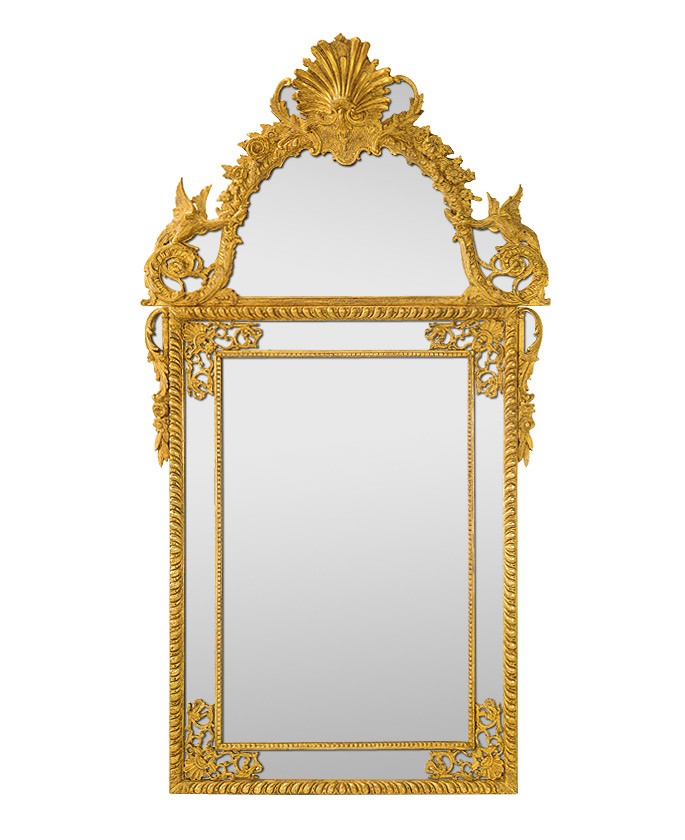1700 – 1730
REGENCY STYLE
At the death of King Louis XIV, the heir Louis XV was too young, it was Philippe Duc d’Orléans (1674-1723), nephew of Louis XIV known as « the Regent » who shared the power of the Regency with the upper classes. nobility and parliamentarians.
It is a transition period of great artistic interest to a new, more intimate society with smaller, more varied homes with more sober decoration.
Craftsmen, cabinetmakers, and ornamental artists of the time, created less for the monarch and his court. They create for the rich bourgeois, the financiers, and the new nobility. They deal with lighter decorative themes such as hunting, fishing, love.
It is the birth of a so-called transitional style, the Regency style.
It was during this period that the large mirrors appeared for decorative purposes above the fireplaces as well as pareclose mirrors adorned shells or a plume.
Moldings of the giltwood and carved wood mirrors are thinner, less protruding with lighter decorative ornaments on the theme of hunting, fishing, love: figures of women or fauns, medallions, bouquets of flowers, rococo elements inspired by Italian Baroque, seashells, fruits, Asian inspired motifs such as pagodas, monkeys, exotic flowers, the mandarins.
Some other mirrors are framed in wrought iron or have veneered wood moldings such as rosewood, amaranth, violet wood, and rosewood.
The Regency style in its rich variety of ornamentation and more curved lines announces the arrival of the young King Louis XV.

